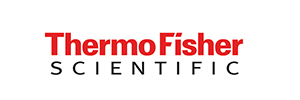Application Note: Challenges and practical solutions for switching to prefilled syringes for injectables
Published: 16 February 2022
Share this post
- Like
- Digg
- Del
- Tumblr
- VKontakte
- Buffer
- Love This
- Odnoklassniki
- Meneame
- Blogger
- Amazon
- Yahoo Mail
- Gmail
- AOL
- Newsvine
- HackerNews
- Evernote
- MySpace
- Mail.ru
- Viadeo
- Line
- Comments
- Yummly
- SMS
- Viber
- Telegram
- Subscribe
- Skype
- Facebook Messenger
- Kakao
- LiveJournal
- Yammer
- Edgar
- Fintel
- Mix
- Instapaper
- Copy Link
There are several end-product formats companies can choose from when developing sterile injectable drugs. The most common ones are liquid or lyophilized vials, prefilled syringes, and cartridges. Due to an increase in self-administration of injectable drugs, the market of drug products in prefilled syringes is expected to reach $9.53 billion by 2026.
Some of the critical patient benefit and improved outcomes prefilled syringes offer include:
- Can be administered quickly, which is a key benefit in critical patient situations
- Able to self-administer treatments at home for chronic diseases without the need
for hospitalisation3 - Reduced risk of contamination (no reconstitution is needed before the injection and this prevents both microbial and chemical cross contamination)
- Minimised risk of injuries with physicians, as minor handling is required
- Improved dosing accuracy (filling volume is accurately set to deliver the desired dose with no need of overfill)
- Reduced costs, especially for expensive biologics, as only trace amounts of API remain in the needle of the prefilled syringe after injection, which increases the overall yield of the manufacturing process.
It is not uncommon for companies that launch commercial drug products in the prefilled syringe format to do so after initially using other product formats, such as vials for the development and clinical trial phases, as overfilling is commonly requested. However, the development of an injectable drug-device combination, such as a prefilled syringe, is a complex process that requires substantial investment of resources to achieve desired and successful outcomes.





